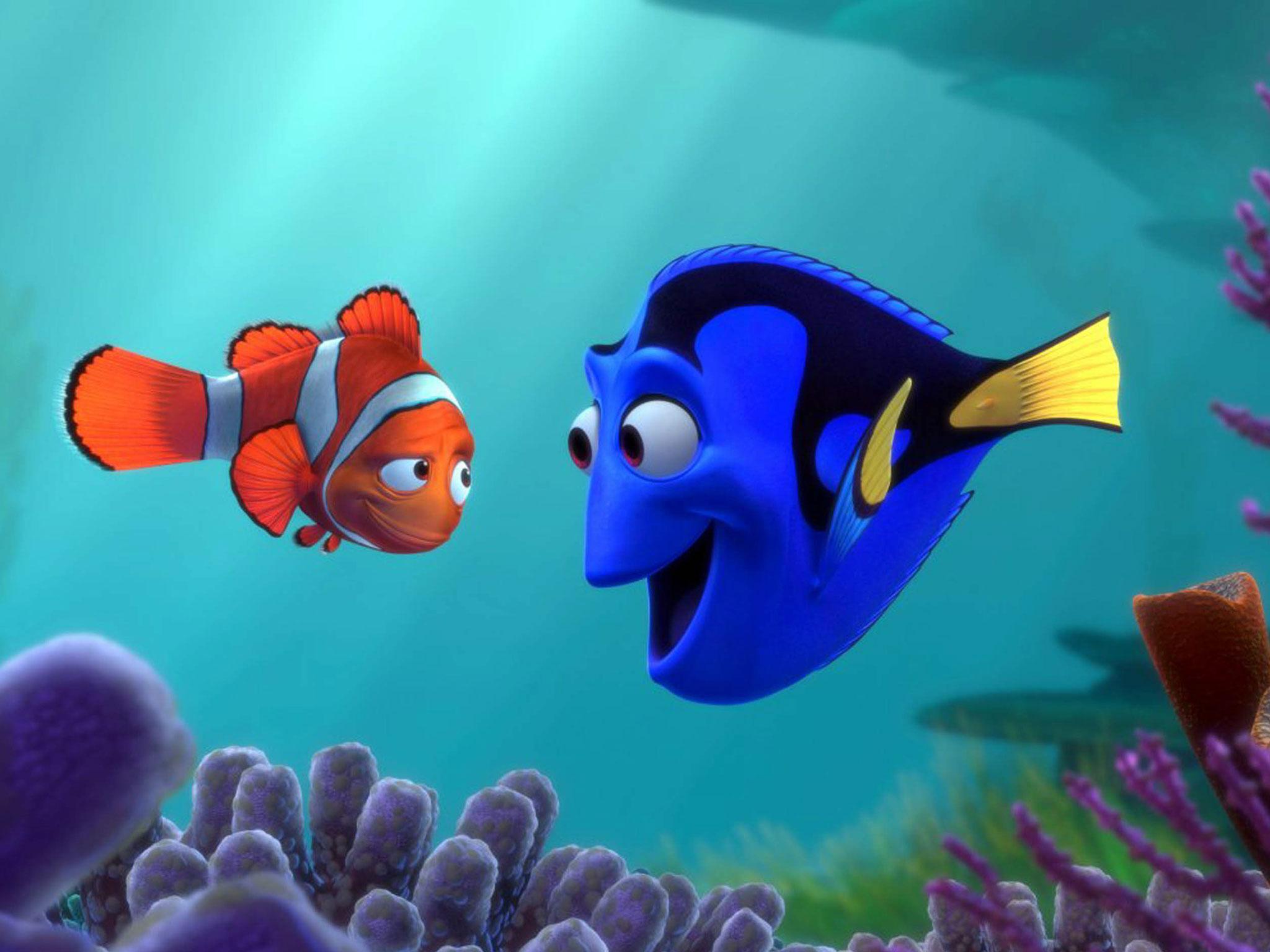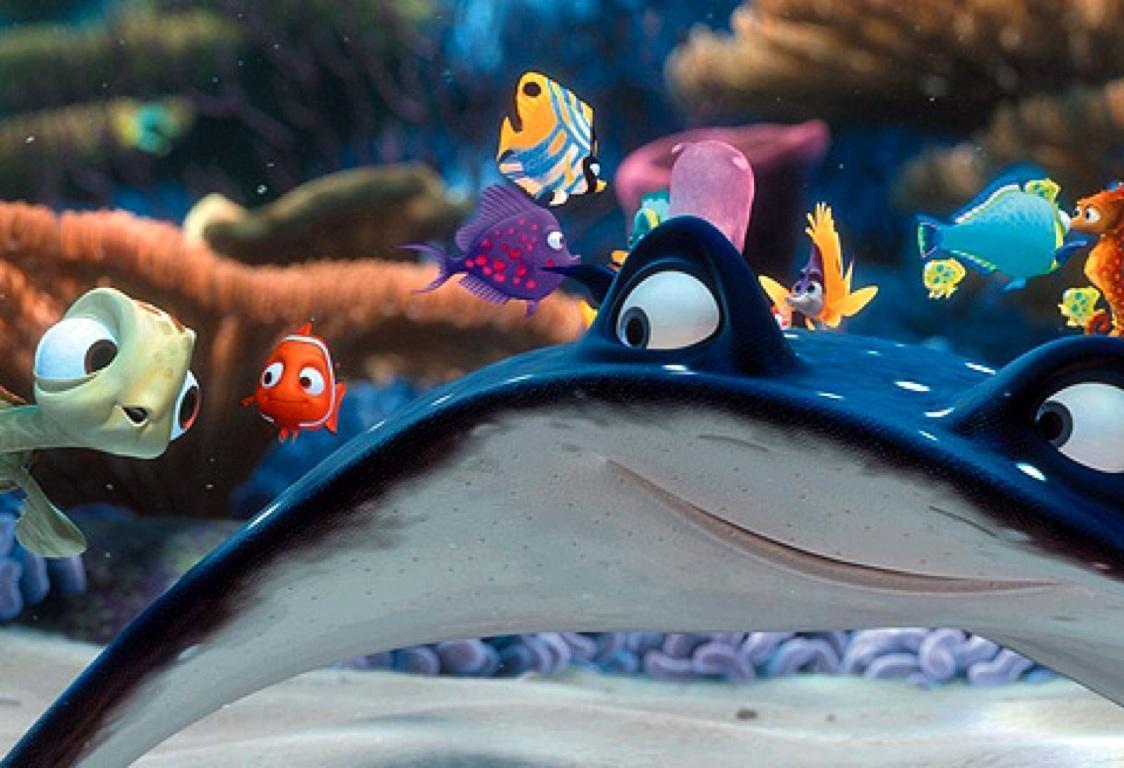Finding Dory: What made Finding Nemo such a hit with fans of all ages?
Director Andrew Stanton muses on the success of the billion-dollar grossing animated movie

Your support helps us to tell the story
From reproductive rights to climate change to Big Tech, The Independent is on the ground when the story is developing. Whether it's investigating the financials of Elon Musk's pro-Trump PAC or producing our latest documentary, 'The A Word', which shines a light on the American women fighting for reproductive rights, we know how important it is to parse out the facts from the messaging.
At such a critical moment in US history, we need reporters on the ground. Your donation allows us to keep sending journalists to speak to both sides of the story.
The Independent is trusted by Americans across the entire political spectrum. And unlike many other quality news outlets, we choose not to lock Americans out of our reporting and analysis with paywalls. We believe quality journalism should be available to everyone, paid for by those who can afford it.
Your support makes all the difference.It’s something that would only happen in the world of Pixar: A tiny orange clownfish named Nemo goes missing; his father sets out to find him; and a movie about their adventure rakes in nearly $1 billion worldwide.
Everyone knows the story of Finding Nemo, the 2003 animated smash that led to the highly anticipated sequel, Finding Dory, which hits theaters Friday. Box office experts predict the flick could gross $120 million this weekend, as moviegoers flock to the film that fills in the gaps about Dory (Ellen DeGeneres), the cheerful blue tang fish with short-term memory loss who accompanied Nemo’s father, Marlin (Albert Brooks) on his journey.
From the moment Dory was announced, there was massive excitement — so much that it was hard not to remember the enormous impact of the first film, beloved by not only children but also teenagers and adults. What was it about Finding Nemo that connected so deeply with people of all ages?
“I think I’ll never really know,” admitted Andrew Stanton, who directed Nemo and Dory and helped write Pixar’s Toy Story, Toy Story 2 and Wall-E. Given the massive DVD sales after the movie, however, he offers one theory about younger viewers: “It’s a lot like my generation where Wizard of Oz was played every year on TV — you just know that movie whether you like it or not. So there’s basically a generation of people now that they feel like Nemo is their movie. It’s just part of the zeitgeist of them in their formative years, so that’s just the luck of the draw.”
Sure, it could be luck — or it could be the fact that it’s a sharply written epic that has captivating marine scenery, complete with adorable sea creatures and lots of humor. David Price, the author of The Pixar Touch: The Making of a Company, says that in addition to delightful characters and “magical” casting of DeGeneres and Brooks, young viewers may relate to the “non-humans trying to navigate through the human world.”
In other words, kids watching the movie may empathize with Nemo and his pals as they’re stuck in the dentist office fish tank. “I think this struggle of animals trying to make sense of the human world has some parallels that children have growing up and trying to make sense of the world around them,” Price said.
But while kids could enjoy it for all those reasons, what about their parents? One hypothesis is that the movie struck a nerve with moms and dads and caregivers out there, especially because the movie — unlike most films targeted at kids — focuses on parenting: It hits hard on tearjerker themes about growing up and when it’s okay to let your kid go.
In the movie, Nemo is Marlin’s remaining fish egg when an evil barracuda kills Nemo’s mother and other siblings. So Marlin is wildly overprotective, especially since Nemo has a weak fin (or his “lucky fin”) and is terrified to let him out of his sight. That leads to disaster when Nemo, frustrated about endless rules, defiantly swims away and is captured by a scuba diver. Eventually, after his trip across the ocean to rescue Nemo, Marlin realizes he needs to learn to trust his son.
Need tissues yet? “I certainly relate,” Stanton said of the parenting themes. “I was a parent at the time of a 6-year-old and a 3-year-old that then got older as I kept working on it. And I was at this rare place where my dad was still alive and kind of sprightly, and I was very aware of what it was like to be both the son and the father at the same time. I felt like I was sort of in the middle of the telescope, and I just kind of jumped on that rare moment where I could see it from both angles really strongly.”

Watch Apple TV+ free for 7 days
New subscribers only. £8.99/mo. after free trial. Plan auto-renews until cancelled

Watch Apple TV+ free for 7 days
New subscribers only. £8.99/mo. after free trial. Plan auto-renews until cancelled
At first, Stanton said, he was hesitant to focus on parents, usually a no-go in animated movies. Then he realized that if you’re a good enough storyteller, you should be able to focus on anything you want. “I really loved the freshness of trying to make even young kids empathize and understand the drama coming from the parent,” he said.

Plus, with its various characters, Nemo helped highlight the pros and cons of different parenting styles. California-based writer Ariane Coffin was so struck by this that she penned a Wired piece in 2012 entitled “Everything I Know About Parenting, I Learned from ‘Finding Nemo.'”
Coffin, who writes for parenting web site GeekMom, realized her husband was a “Marlin,” or the more cautious parent — and she was the “Crush,” the laid-back sea turtle. In one scene, Crush’s baby turtle Squirt is carried away by the tide; while Marlin freaks out, Crush is all, “Whoa, kill the motor, dude. Let us see what Squirt does flying solo.” Crush returns safely, thrilled by the mini-adventure he just had.
“It kind of helps to realize that there are different ways [of parenting], and none of it is wrong — you can appreciate what other people do as well, even if it’s different from your way of doing things,” Coffin says now. “A couple or a community can be wildly different and still help shape each other without actively trying to change one another.”
In addition to hitting a chord with parents, Stanton also thinks Nemo benefited from Pixar’s “cascade of success,” as audiences kept going because they didn’t believe the last one could be topped, like the sequence of Disney’s The Little Mermaid to Beauty and the Beast to Aladdin to The Lion King in the 1990s. Similarly, “Nemo” came after a hot streak of Toy Story, A Bug’s Life, Toy Story 2 and Monsters Inc.
He also says that Nemo had a ton of repeat viewing, predominantly from girls — which may have doubled the audience in some theaters.
“I do know that somehow when something is that successful – this happened with Titanic – [where] the girls go, the boys will follow,” Stanton said.
© Washington Post
Join our commenting forum
Join thought-provoking conversations, follow other Independent readers and see their replies
Comments